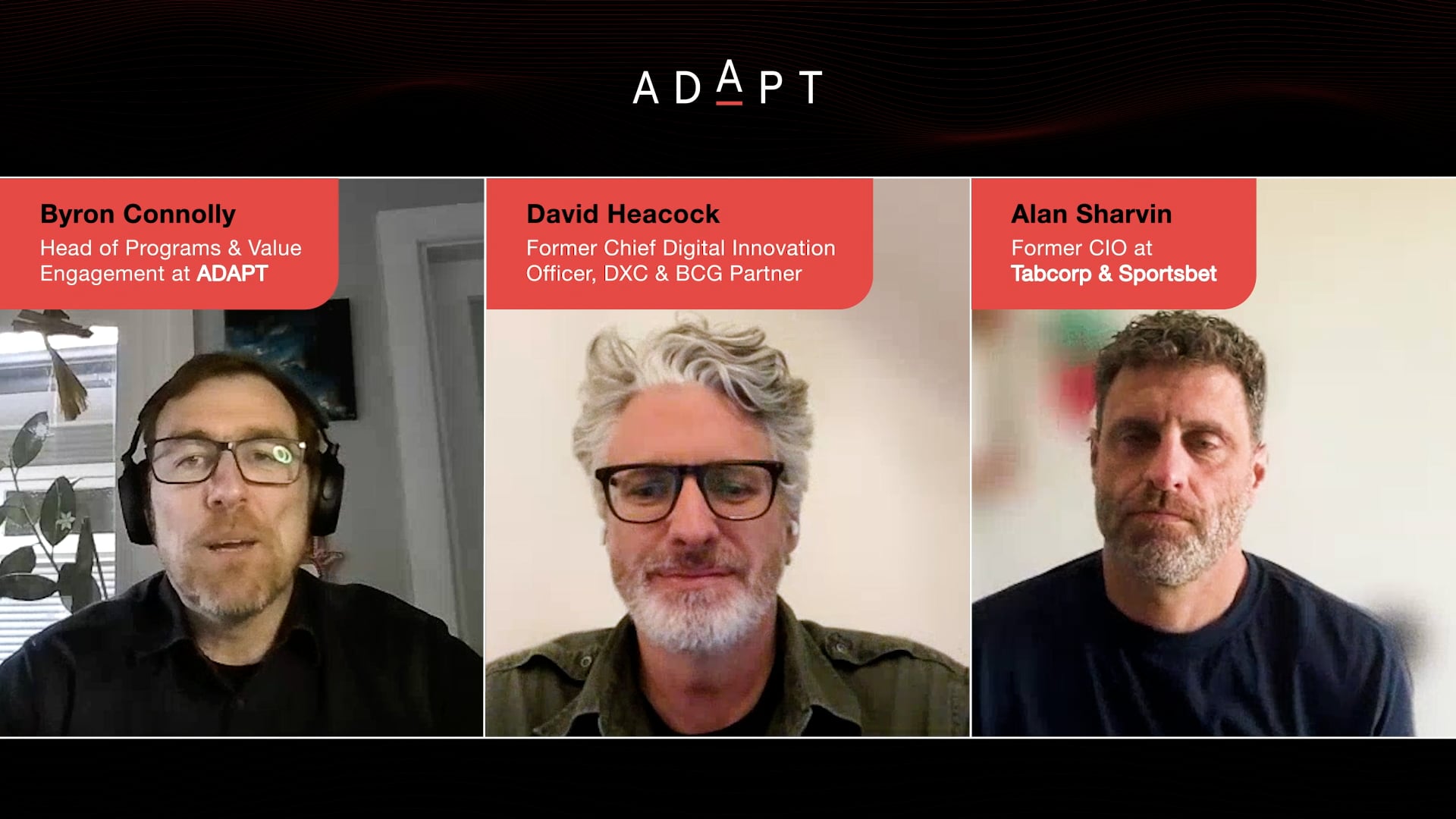The 4 ANZ Market Trends That Will Shape 2023
2022 saw growing reliance on IT teams to fuel business growth, while scrutiny continued to mount from the Board to justify value. Amidst these changes, there are four clear trends that emerged in the ANZ market.
Introduction
2022 has brought considerable change to the local market.
Enterprise technology leaders had to prove their mettle in the face of adversity.
As we look toward 2023, it’s worthwhile reflecting on how changes in the market will shape the future.
After scouring through hundreds of data points we collected this year, four trends emerged from 2022 that stood out in the ANZ market.

1. Organisations must provide equitable employee experiences for the home and office worker, as work-from-home rates stabilise.
Before Covid-19, only 12% of the Australian workforce worked from home. In mid-2022, 55% of Australian employees had adopted hybrid working.
ADAPT’s ANZ market research indicates that more than half of the workforce will continue to work from home in 2023.
So, what will this mean for 2023 and beyond?
Leaders must treat the hybrid setup as the new norm. They must safeguard employees’ digital well-being, engage with them, and empower them to collaborate for organisational resilience.
At the centre of employee experience is technology, which should be used to identify behaviour patterns moulded by employee experience in the hybrid setup.
This should help you strategise on how to empower your workforce.
Are they engaged? Are there any signs of digital fatigue? Where do they spend their time on? What can they do better?
Technology must empower them to make decisions and act.

2. Accelerate digitisation to protect brand reputation. 70% of Australian CISOs report outdated technology as the biggest risk to cyber security.
In 2022, the top business inhibitor of cyber security is too many manual processes operated through legacy technology, which does not meet the demands of digital workflows.
Looking deeper at the impact of cybercrime in Australia, the AIC puts the economic cost of cybercrime to the local economy at around $3.5 billion annually.
The Australian Federal Government states the considerable cost of cybercrime attacks to a business is an estimated $276,323 annually, and 53% of the cost is spent on detection and recovery.
ADAPT’s Security Edge survey revealed the top five inhibitors to evolving security measures in 2022 were:
- Too many manual processes
- Lack of in-house security skills
- Lack of security awareness
- Security fatigue
- Organisational culture and politics
Too many manual processes compromise security initiatives from legacy technologies. How does legacy technology spell issues for security?
Old technology is more complex to update, and when the old technology is mixed with the new, a unified strategy for security becomes more challenging to achieve.
The past two years have demonstrated that cyber security can no longer be neglected, and doing so has high stakes.
The increase in the number of security threats and the sophistication of these threats that easily sneak past traditional and manual solutions is a cause for concern.
ADAPT’s Security Edge survey identified the following as the top 10 concerns for Australian CISOs in 2022:
- Ransomware
- Managing data security
- Third-party attacks
- Phishing attack
- Cloud security
- Identity theft
- Malware
- State-sponsored cyberwarfare
- Mobile security
- Viruses
3. Infrastructure agility expands, with 55% of workloads predicted to be housed in the public cloud by 2024.
“Organisations are increasingly turning to value-capture, as the development of ROI as a metric was to assess fixed costs related to legacy environments,” says Matt Boon, Senior Research Director at ADAPT, commenting on how the organisations that are highly digitised capture more value from their operations.
ADAPT’s CIO Edge survey has revealed that 48% of highly digitised organisations have achieved value-capture for their audiences, compared to only 16% captured for the moderately digitised ones.
According to Boon, “Modernisation is the key to driving operational efficiency, and companies that delay are likely to lose ground to competitors.”
With that in mind, what are the main criteria to tell whether your organisation is modernised?
The highest predictive value is the use of the public cloud. Approximately 56% of Australian organisations have successfully modernised their IT infrastructure.
According to ADAPT’s 2022 CIO Edge survey, it’s the top business driver for improving operational effectiveness. Currently, 35% of IT processing loads are done in the public cloud.
ADAPT forecasts that by 2024, 55% of workloads will be hosted in the public cloud.
The public cloud is ideal for building modern, flexible, and resilient architectures. The benefits of the public cloud call for greater demand for the system and a more substantial justification for its investment.

4. 87% of Australian Chief Data Officers say Self-Service BI will be critical to empowering informed decision-making.
Competing business priorities, skills shortages, and legacy issues make up some of the most contentious barriers CIOs faced in 2022 as they strived to lead their organisations’ digitisation.
“Legacy issues will persist thanks to the continued shift towards cloud-based workloads”, comments Matt Boon.
However, the most significant challenge is earning leadership buy-in. This goes back to the value conversation as we get business leaders aligned. To ensure support, CIOs must revisit the conversation about what their IT initiatives can deliver for the rest of the business.”
As a solution, Australian enterprise organisations have deployed emerging technology for short to medium-term initiatives, with self-service BI proving to be the most effective technology in creating a data-driven organisation.
Self-service BI will be key to data democratisation and empowering employees with the information they need to make decisions and progress initiatives.
Data literacy must be increased by adopting self-service BI, so people know how to interpret and generate insights from data.
























